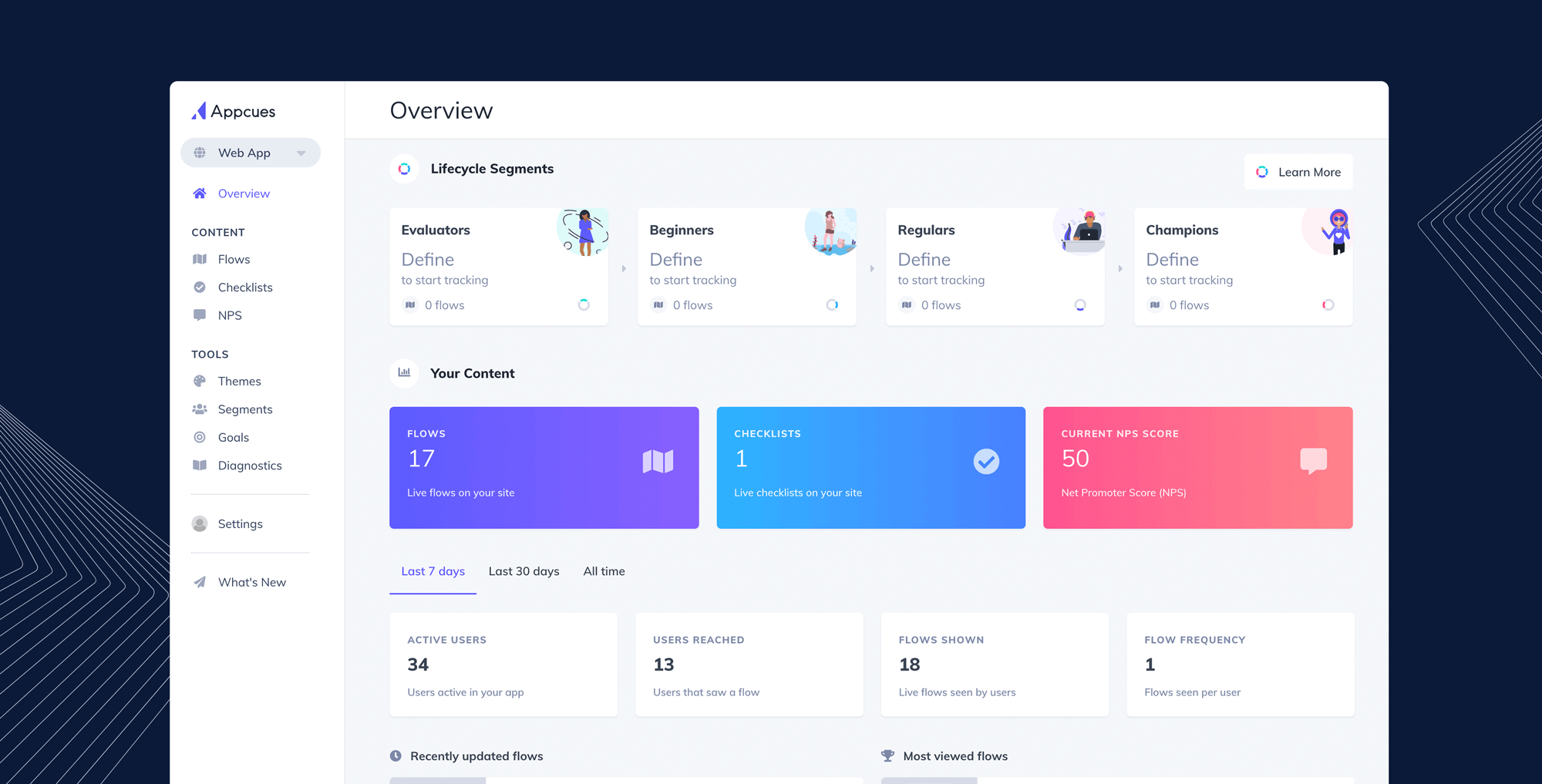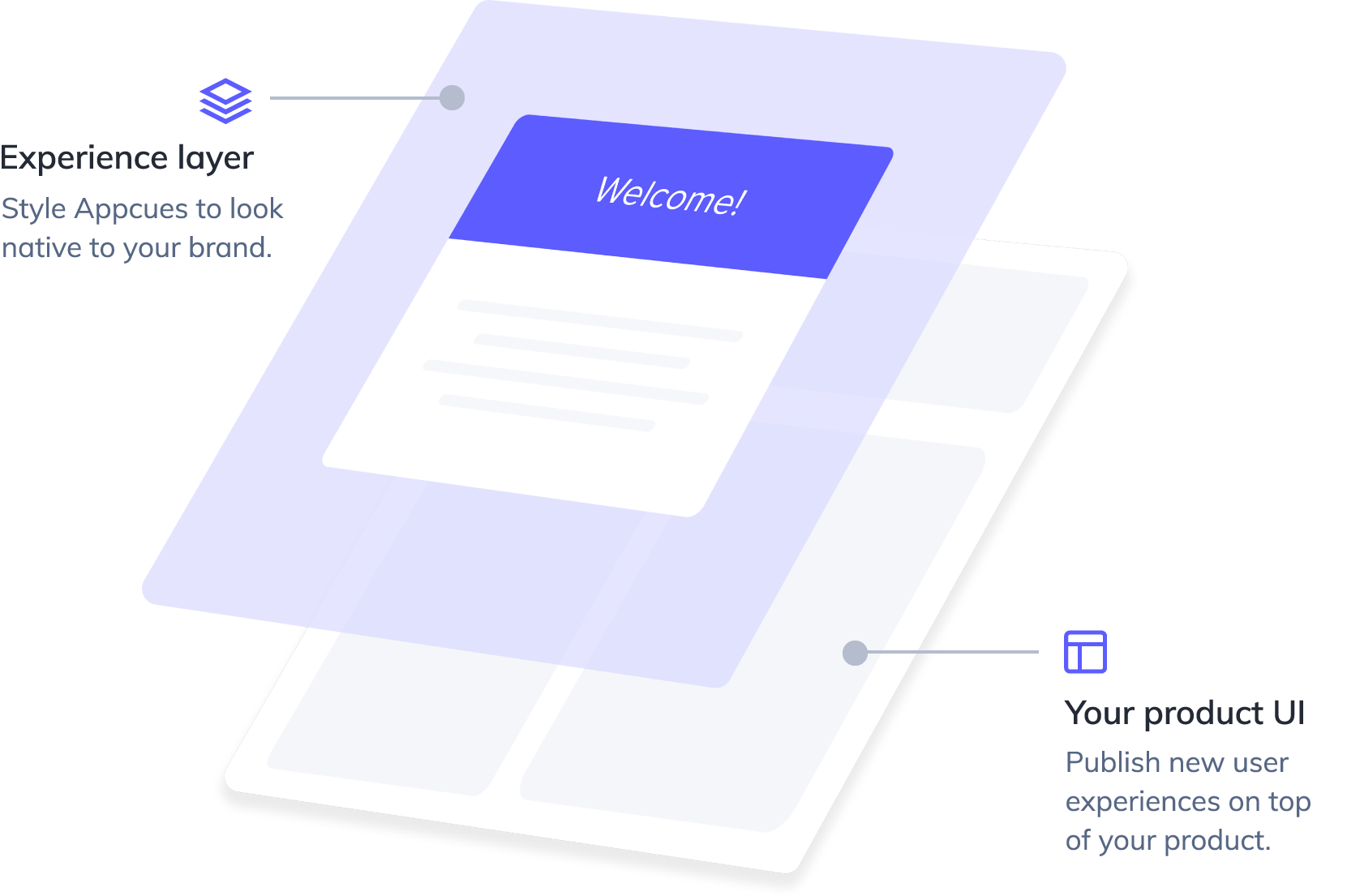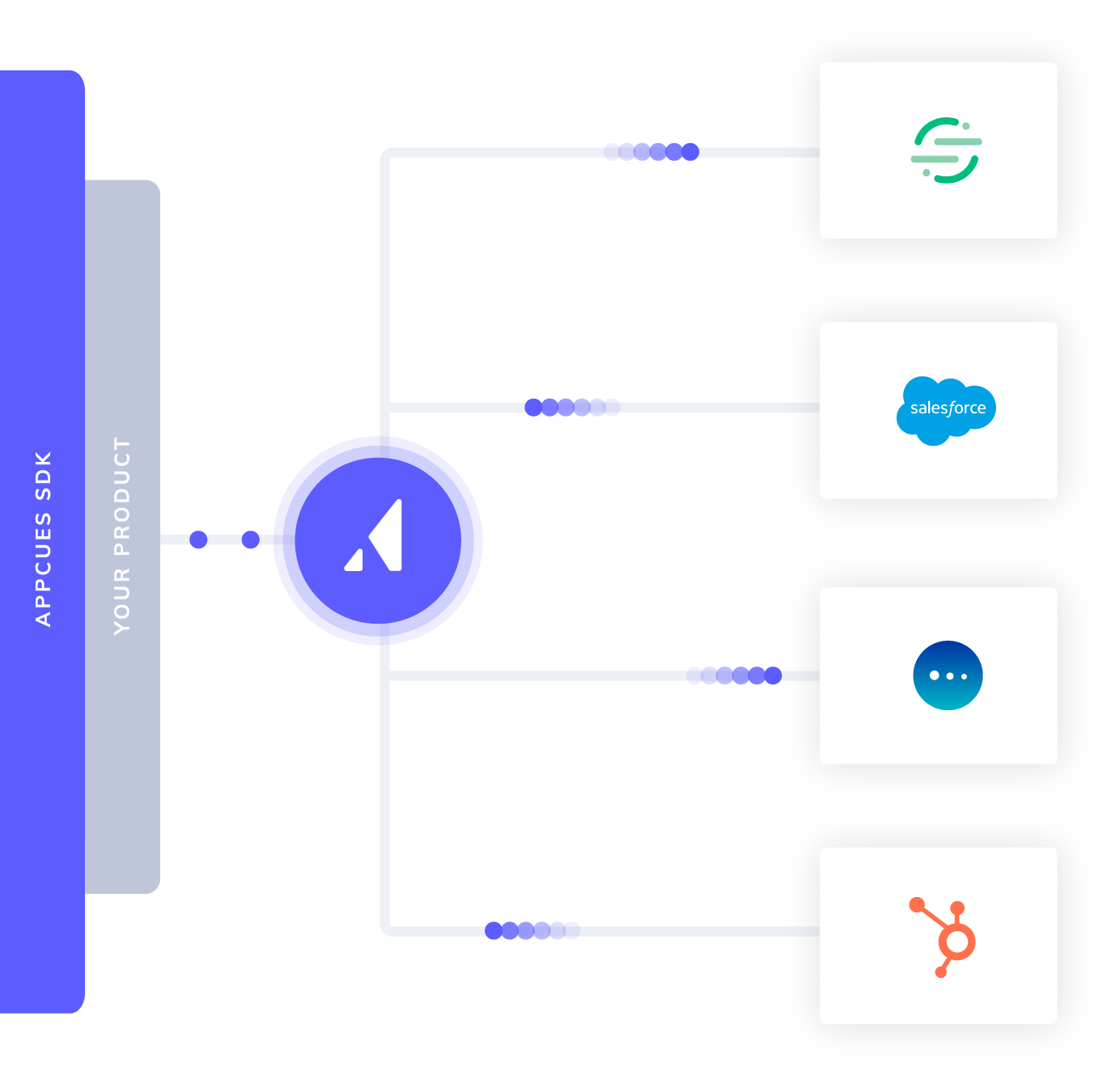Introducing the Appcues Product-Led Growth Platform

.png)

.png)
We’re at a fork in the road.
Maybe it was Instagram's effect on our social lives or Amazon changing the way we shop. Or perhaps it's because we can now click a button to make a hamburger appear at our doorstep 20 minutes later. Whatever the reason, people are conditioned differently now. We prefer self-service experiences. We expect everything to be personalized. We demand instant gratification. Anything less is just friction.
The implications of this change are completely disrupting the way businesses operate—and the shift permeates far beyond consumer applications. Now, the vast majority of software buyers want to self-educate instead of talking to a salesperson. Customers are rejecting one-size-fits-all products and are far more likely to seek out another solution than to contact support for help. And with more choices than ever, who can blame them?
Friction is killing business growth. The change is undeniable and clear.
The question is what you’re going to do about it.
The most recent vintage of Silicon Valley darlings—Slack, Uber, Dropbox, among others—are putting their products in the hands of prospects, making those products easier to learn and quicker to deliver value, building in self-serve support and upgrade paths, and rapidly responding to user behavior and feedback. These experiences are turning new users into advocates—and advocate they do. We call this product-led growth.
But this isn’t just a model for the for the next tech unicorns. IBM—a Fortune 100 company with a 107-year heritage and a reputation for an outstanding field sales program—is disrupting itself and becoming product-led.
Why? Because organizations that adopt product-led strategies have higher customer satisfaction, longer customer lifetimes with more efficient acquisition costs, and greater revenues at higher margins. These companies are more agile—moving faster to seize market opportunities and better serve their customers.
The alternative is to continue scaling through hiring, but even well-staffed teams will struggle to deliver on today’s user expectations. Their organization charts will become bloated and their user experiences cluttered with friction. They'll remain more focused on how they want to sell, rather than how today's customers want to buy. They'll ultimately be outmaneuvered by their product-led competition.
We believe in a world in which it’s easy for anyone and everyone to understand, evaluate, and derive value from the products they use. In this world, every user’s experience is optimized to meet their unique needs and expectations.
We believe in a world in which organizations put their users at the center of everything they do. A world in which teams are truly aware of users’ needs and expectations, and are able to respond to changes quickly and effectively.
We believe in a world without functional silos, in which product teams and go-to-market teams are aligned around what’s best for both the user and the commercial goals of the business. A world in which every team within an organization is committed to delivering the frictionless, product-led experience that their users demand.
So yes, we’re at a fork in the road. This is when you decide whether you’re building a business for the future or optimizing for the past.
At Appcues, we’re doubling down on product-led growth.
There are well over 5,000 marketing and tools to help businesses grow. While powerful, most of them were built to scale dated, people-led tactics, and focus more on reducing friction in your experience than your end users’.
That's why we created the Product-Led Growth Platform, a new breed of solution purpose-built to deliver exceptional user experiences at scale and help businesses grow faster by doing so.
There are three core components to the PLGP:

The experience layer: The PLGP works by adding a new layer on top of your web or mobile product that empowers non-technical teams to publish in-product experiences in minutes, not weeks. Importantly, the PLGP is a native extension of your product experience. Adding a chatbot or other non-native communication to your product experience is just introducing more friction that will slow your business down.

Building, targeting, and measurement: The PLGP includes advanced design, targeting, and personalization capabilities to ensure every in-product experience delivers value and impact—from onboarding through advocacy. And because the PLGP is purpose-built to enable product-led growth, we’ve baked in a flywheel framework for understanding the user lifecycle and reinforcing the path of success from new user to power user.

Integrations and connection to your existing ecosystem: The PLGP ties into your existing technology stack. This allows teams to do everything from introducing product-qualified leads to your CRM and coordinating in-product experiences with email communications, to enriching your customer profiles with valuable declared data captured throughout the user lifecycle. Most importantly, it enables organizational alignment.
See what's new in the Product-Led Growth Platform.
With these three combined components, businesses will use the Product-Led Growth Platform to accelerate user growth and revenue, scale self-service support, and collect contextual feedback like they’ve never been able to before. They’ll reduce friction throughout their user lifecycle, and keep up with changing user expectations.
The future is product-led.
Are you going to keep up? Or are you going to let friction slow you down?